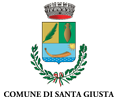Discover Romanesque: The time of Romanesque
Years 1000-1050
The passage from the 10th to the 11th century was marked by a general, intense economic recovery. The Roman heritage was conveyed by the ‘renaissance’ of the Carolingian Sacred Roman Empire, Barbaresque peoples had been melting within local communities since a long time and the stable presence of Arabs in the Iberian peninsula had contributed to revitalize culture. Medieval Latin was progressively replaced by new, neo-Latin languages, concurring to make the identity of every single people. A strong demographic increase, along with the continuous progress of farming techniques, led to an intensive exploitation of fields. Town population were also increasing, paving the way for a long-lasting, remarkable recovery.
In the Upper Tyrrhenian Sea, the ancient relationships between Tuscany, Sardinia and Corsica were strengthened. As early as in the 9th century, Boniface II, seignior of Lucca and maquis of Tuscia, was the prefect and tutor of Corsica, where he is said to have founded the small town of Boniface, hosting until the 15th century a considerable colony of people from Lucca. At the same time, a sort of Tuscan-Ligurian-insular thalassocracy was imposed by the Obertenghi household, ruling along Tyrrhenian coastlines from Genoa to Piombino and from Corsica to Sardinia over the sea.
1016: Pisan-Genoese expedition promoted by Pope Benedict VIII against the Saracens settled in Sardinia.
1029: Adalberto Pallavicino Obertenghi, marquis of Massa and Corsica, ceded part of the dominions conquered in the Island following the 1016 expedition.
1050: along his way from Rome towards Santiago de Compostela, the Armenian pilgrim Davinus died in Lucca, where he had stopped to worship the Sacred Face.
























